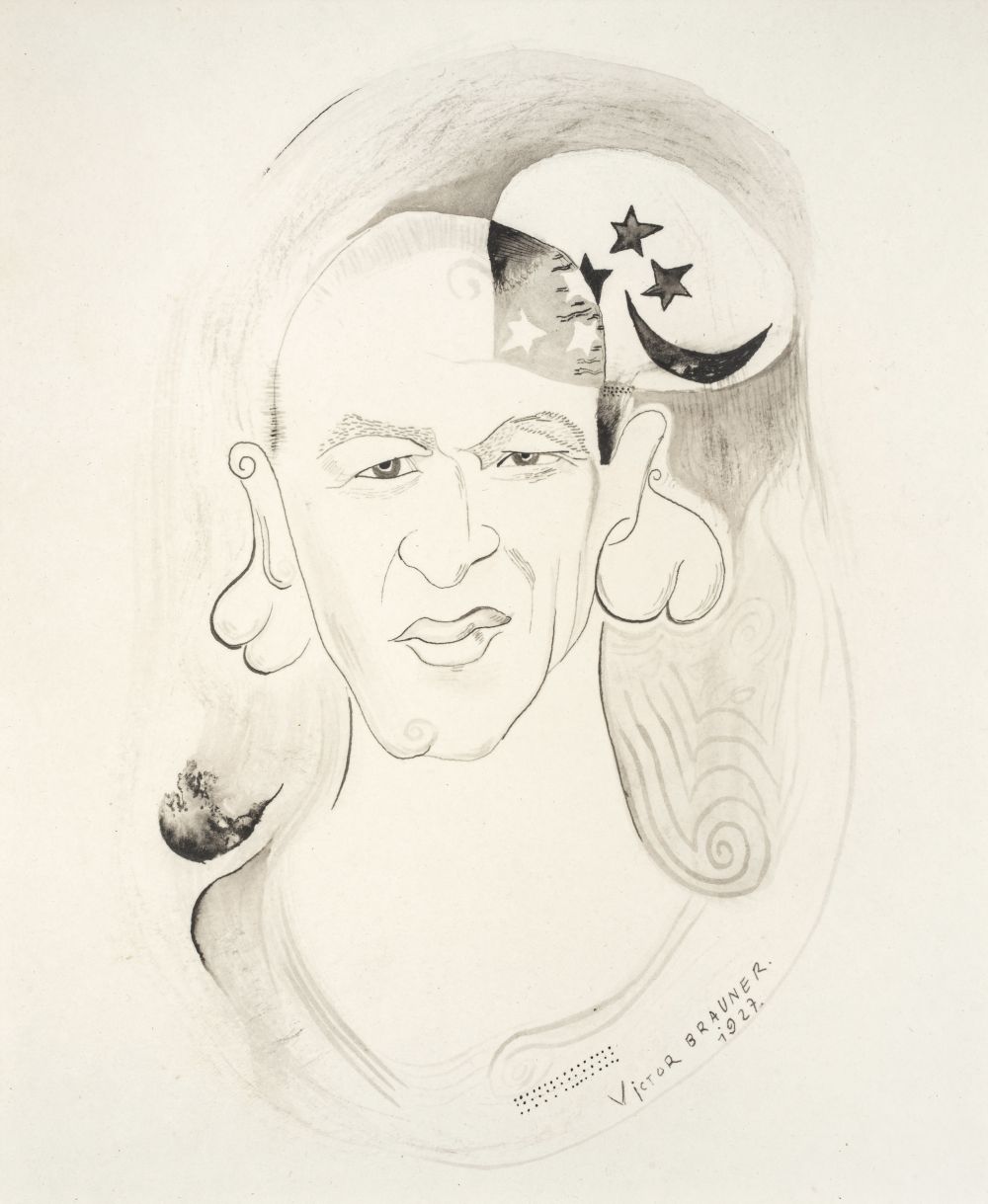Biography
By incorporating surrealist theories and a spiritual dimension, Brauner creates a new visual language, not to render reality as it is, but to explore the invisible forces that underlie our perception of the world.
Victor Brauner (1903-1966), born in Romania, immersed himself in the artistic effervescence of Bucharest during the 1920s, before joining the surrealist movement in Paris in 1933, where he remained until his exclusion in 1948. Imbued with avant-garde movements such as expressionism, constructivism and dadaism, he recognized himself in the radical nature of these movements, in perfect harmony with his independent spirit. It was during his stays in Paris between 1925 and 1938 that he gradually moved towards surrealist painting, before settling there permanently in 1938. His adherence to surrealism in 1933 led him to actively participate in the events of the group around André Breton. The loss of his eye in 1938 transformed his Self-Portrait, painted seven years earlier, into an almost prophetic work. Illustrating surrealist theories, this painting took on a magical turn, symbolizing the artist’s vision of the world. Due to his Jewish status, his irregular situation and his fierce opposition to fascist and totalitarian regimes, he was forced to hide in the south of France during the war, unable to flee to the United States. During this period of hiding, Brauner turned to secret doctrines such as tarot, alchemy, spiritualism and Kabbalah, seeking to protect himself from occupied France by evaporating into a dream world where the laws of reality were suspended. This spiritual quest, already present during his childhood through his father, imbues his works with a mysterious and magical dimension. Paradoxically, this era of fear and material deprivation became fertile ground for technical inventions (such as the use of wax and recycled materials) and new forms.
Anxieties and traumas related to world events remain omnipresent in his work. New influences, such as psychoanalysis and wild thought, manifest themselves through series such as Onomatomania, Les Rétractés, then Mythologies and Fêtes des mères. Brauner thus creates a new visual language, not to render reality as it is, but to explore the invisible forces that underlie our perception of the world. During this period of clandestinity, Brauner turns to secret doctrines such as tarot, alchemy, spiritualism and Kabbalah, seeking to protect himself from occupied France by evaporating into a dream world where the laws of reality are suspended. This spiritual quest, already present during his childhood through his father, imbues his works with a mysterious and magical dimension. Paradoxically, this era of fear and material deprivation became fertile ground for technical inventions (such as the use of wax and recycled materials) and new forms. The post-war period, meanwhile, was marked by a stylistic exploration that testified to his newfound freedom, although the anxieties and traumas linked to world events remained omnipresent in his work. New influences, such as psychoanalysis and wild thinking, manifested themselves through series such as Onomatomania, Les Rétractés, then Mythologies and Fêtes des mères. Brauner thus created a new visual language, not to render reality as it is, but to explore the invisible forces that underlie our perception of the world.



